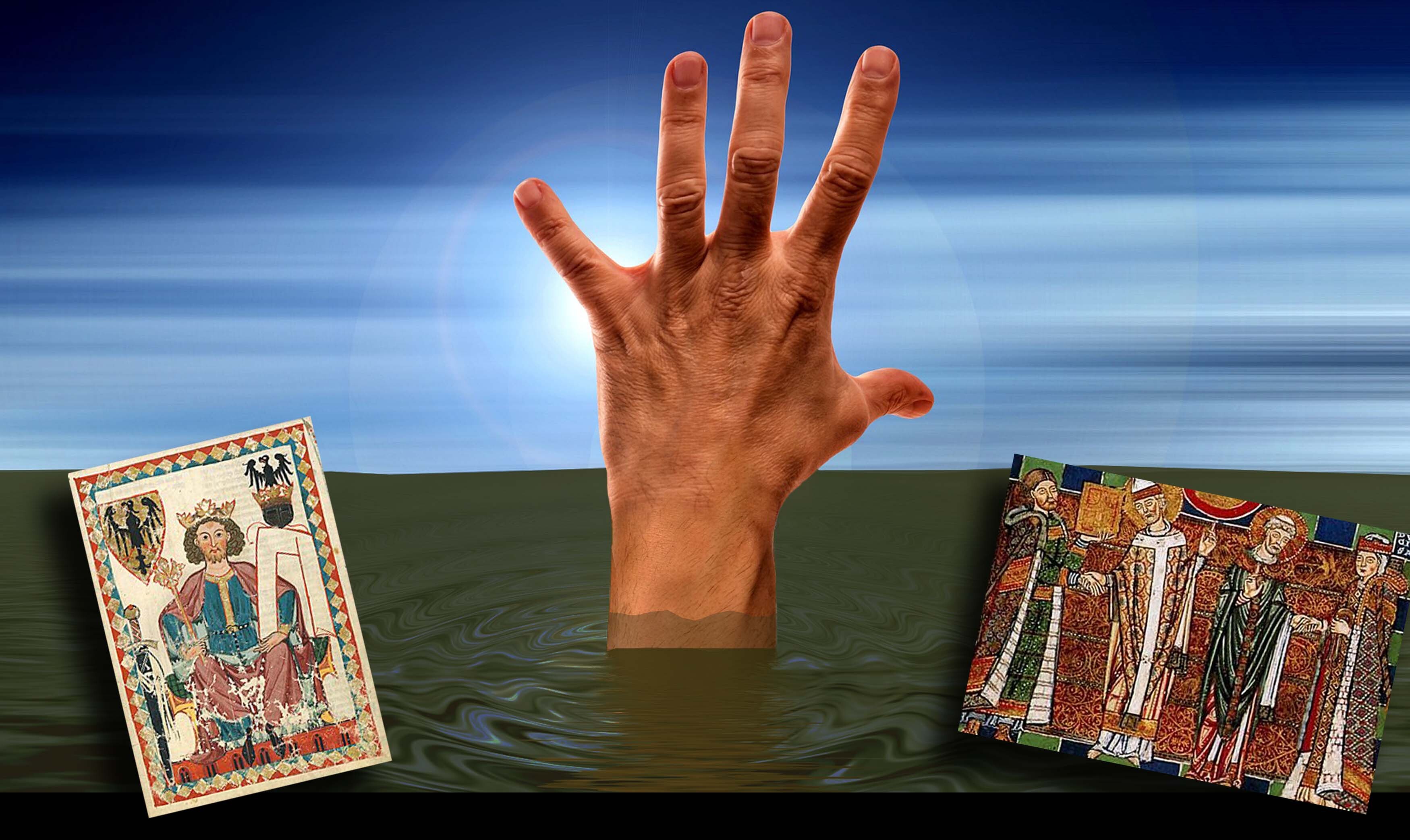The Worst Way to Die: The Erfurt Latrine Disaster
What’s the worst way to die? Maybe drowning? Maybe suffocation? Being buried alive? What about suffocating, drowning and being buried alive all at the same time…. in a pit of human waste?! That’s exactly what happened in Erfurt, Germany in 1184. In this episode, we tell the story about this disaster and what led up to it. Then we play the quick quiz with strangers on the Internet from Jordan, Syria, Wales, Los Angeles and Morocco!

Germany was part of the Holy Roman Empire, along with Netherlands, Belgium, Switzerland, Austria, Luxembourg, The Czech Republic, Northern Italy, Slovenia, Slovakia, Poland and part of France. It was a huge land and in the early 1100s, a member of the Hohenstaufen Dynasty took the throne of Holy Roman Emperor – Henry the Sixth. Henry – or Heinrich – had just returned to Germany after studying in Italy with his father. He came back speaking several languages and was an accomplished poet. Here’s a love poem he wrote from the voice of a female companion:
“Now fare you well and ride,
dearest of all men,
the chosen one that I
desire most again.
I’ll die with longing for you every day:
not even God can pay me back,
in all the world, for what I’ll lack,”
said she, “while you’re away.”
“It was your luck, good friend,
that we lay face to face:
I touch you in my mind
and still feel your embrace.
I want you to enjoy the thoughts I hold,
since you’re what’s excellent in them,
as setting of a noble gem
adorns a work of gold.”
You know, I’m adding this beautiful poem here only to offset what we’re going to talk about in a bit.
So back in 12th century Germany, there were constantly land battles and struggles for power happening. Jurisdictional lines were always being contested and fought over. The Holy Roman Empire was really split into a lot of different types of towns and states and cities and jurisdictions. And there was an even greater struggle happening – the struggle between feudal nobles and religious leaders of the Roman Catholic Church. The church would claim land for itself, only for noblemen to say that it belonged to them. This happened all over the empire and happened for the entire 1,000 year lifespan of the Empire.
The dispute that we’re talking about here happened very soon after Heinrich took the throne. There was a land dispute between two men in the area- Conrad of Wittelsbach, otherwise known as Archbishop Conrad of Mainz and Ludwig the Third, who was the Landgrave of Thuringia, I’ve also seen him referred to as Louis the Third. The name Conrad is a title of nobility, basically meaning “brave counsel” and Landgrave is another title of nobility – similar to a Duke. So the Conrad of Wittelsbach and the Landgrave of Thuringia had a problem and history didn’t record exactly what the conflict was. It’s a safe bet to say that it was over land and power. A Landgrave historically referred to imperial immediacy, which was a system where the person’s land didn’t answer to any local nobles or lords or anything – they were to only fall under the power of the Holy Roman Empire itself. I guess this guy was like a 12th Century sovereign citizen or something. Well this issue had been going on for quite some time and good ole King Henry decided he needed to do something about it once and for all. These two men had been feuding ever since the military action that had taken place in Poland against Henry the Lion like 20 years before. So it was time to finally stop this and settle it. He traveled through the country, meeting with the men and cordially inviting them to a formal sit-down.
It was happening at the Petersburg Citadel in Erfurt. Men started assembling in Erfurt the day before, on July 25th, 1184. It was a giant fortress-like church building in the middle of Erfurt, which is a city situated about halfway between Frankfurt and Berlin in the central part of modern day Germany. Numbers vary and it depends on where you get the information, but it could have been more than 100 nobles that gathered in the Citadel the next morning, on July 26th. That’s where it all went to sh….where it all went bad.
It was the morning of July 26th, 1184. More than 100 nobles from around the German Holy Roman Empire were meeting in Erfurt to settle long-standing land disputes, mostly between Conrad of Mainz and Louis the Third of Thuringia. They were meeting on the second floor of the structure. And that’s when the floor started creaking. The wood supports beneath their feet gave out from the weight of the large gathering of men. They plummeted to the floor below, where they broke through it as well.
Falling two floors would be bad enough, but what was really bad was what was under that first floor. It was a large latrine pit in the cellar. All of the human waste from anyone in the Citadel was routed down into a cesspit below the first floor. First of all, imagine the every day smell of that. Just a giant latrine pit below the main floor of the building? Maybe that’s why they were meeting on the second floor.
Many of the men fell all the way into the pit. Some were able to hang on and stay on the first floor without falling in, but most weren’t that lucky. The men that did fall in – some of them were hit in the head with falling debris and large wooden rafters. Others fell straight into the pit. They couldn’t swim. These were noble people, not athletes. They may have been great at poems and history – not so much at swimming. So lots of them drowned in the latrine. Others suffocated to death from the fumes. Others were crushed to death. King Henry the 6th was sitting on an area of the room with a stone floor, so he survived. So did Landgrave Louis the Third of Thuringia. By luck, Conrad Mainz survived as well, having grabbed onto the iron rails of a nearby window.
It’s said that as many as 60 nobles died. 60. All at once. Some scholars put the count at closer to 100. Count Gozmar III of Ziegenhain, Count Friedrich I of Abenberg, Burgrave Friedrich I of Kirchberg, Count Heinrich I of Schwarzburg, Count Burgrave Burchard of Wartburg, Burgmeister Breuer of Wartschitt and Beringer of Meldingen – all dead in a pit of human waste. Any count from any burg that meant anything from around the area was instantly gone. And they were only there to help settle a land dispute between two people with whom they weren’t even involved.
In any case – the Erfurt Latrine disaster was one of the most notable deaths of a mass number of nobles all at once in the history of the Holy Roman Empire. It would have been even more consequential if King Heinrich would have died as well. History didn’t record what happened with the land dispute, but to this day, you can go to Erfurt Germany and actually visit the building where this amazingly disgusting event happened. It’s the oldest surviving building of the Petersburg Citadel, called the Peterskirche – or Saint Peter’s Church. So if you’re into tragedy tourism, there’s one to put on your list. The grossest mass death known to man. The Internet Says it’s True.

Bonus episodes and content available at http://Patreon.com/MichaelKent
Review this podcast at https://podcasts.apple.com/us/podcast/the-internet-says-it-s-true/id1530853589
For special discounts and links to our sponsors, visit http://theinternetsaysitstrue.com/deals

